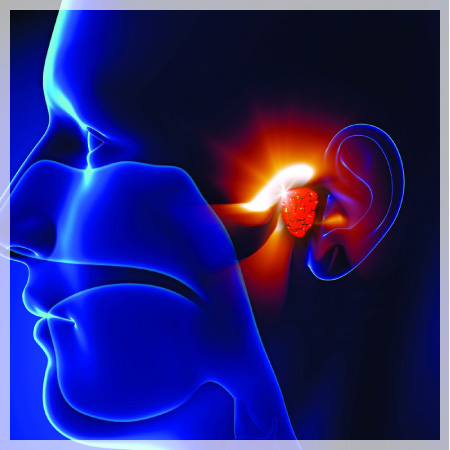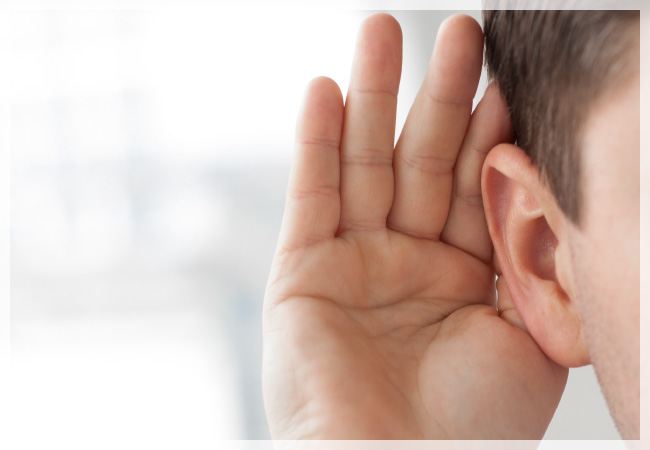Currency
November 05, 2017

Occupational hearing loss affects millions of workers across the country. This type of injury can severely limit an individual’s ability to function normally, and reduces their quality of life. Businesses can expect to see a negative impact on productivity and profit as well as an increase in lost-time and workers’ compensation claims, leading to numerous additional hidden costs. Not only is it in your best interest to limit noise exposure in order to protect your bottom line, it is your duty and responsibility to provide your employees with a safe and healthful workplace.
Sound begins by hitting the outer ear. When this happens, vibrations move towards and touch the ear drum, which transmits them to the middle and inner ear. Once at the middle ear, three bones (the malleus, the stapes, and the incus – also known as the hammer, stirrup, and anvil, respectively), take the vibrations and amplify them towards the inner ear. Within the middle ear, the cochlea, a spiral-shaped section of the ear filled with fluid and hair-lined cells, take the vibrations and translate them into nerve pulses by way of movement of the microscopic hairs. This translation becomes the sound we hear. When extremely loud noise makes its way into the cochlea, these hairs can be damaged or destroyed, resulting in hearing loss.
When measuring noise, we observe unites of sound pressure levels called decibels (dB). This term originated in the early 20th century based on measuring telephony power in the United States, through the Bell system of companies. A decibel is one tenth of a bel, named after Alexander Graham Bell. The version of the measurement we use for occupational noise exposure is the A-weighted version (dBA), which gives less weight to very low and very high noise frequencies has a stronger correlation with noise-related hearing damage. Decibels are further measured on a logarithmic scale, meaning that a small difference in the number of decibels corresponds with a massive difference in actual noise, and thereby potential for hearing loss. Dangerous decibel levels require monitoring, planning, and controls to keep noise from causing worker injury. Any noise with a decibel measurement over 85 dbA is considered hazardous.

Workers exposed to high levels of noise can expect the potential for permanent hearing loss, even if the exposure is infrequent. Hearing lost in this way is irreparable; there are currently no surgical or auxiliary options available today which can repair loss caused by damaged or destroyed cochlear hair cells. Singular incidents of extreme noise exposure may also lead to short-term hearing loss or changes in hearing (e.g. an individual may feel like their ears are plugged, or hear a persistent ringing). While often temporary to a matter of minutes or hours, frequent exposure can easily lead to these symptoms being permanent. Furthermore, those with noise-related hearing loss may be unable to understand speech or recognize sounds at higher frequencies.
Physiological damage aside, excessive noise can also increase stress in afflicted individuals, both physically and psychologically. It can inhibit the ability to communicate effectively, and increase the potential for dangerous incidents by making it difficult to concentrate or hear important safety or warning alarms and signals.
Engineering controls are the most preferred option in any hazard-mitigation hierarchy. They essentially involve eliminating a hazard altogether through displacement, replacement, installations, or other physical changes. Where noise is concerned, engineering controls take the source of noise and either eliminate it or, somewhere along its path, intercept it and reduce it below hazardous levels before it reaches the worker. Examples include selecting equipment which generates less noise as the same efficiency, installing barriers such as walls or insulation between the source and the worker, maintaining noise-generating equipment (e.g. proper lubrication) to eliminate preventable noise, and isolating the noise altogether.
Administrative controls involve modifying procedures, schedules, or behaviors in order to reduce hazard exposure as much as possible. These controls fall just below engineering controls in terms of effectiveness and desirability. Some examples of administrative controls which can reduce noise exposure include scheduling workers in limited, short shifts to work in noisy situations, positioning work at a long distance from loud noise sources, providing quiet rest areas for reprieve and relief, and scheduling work which generates excessive noise while the fewest workers possible are on site.
Although personal protective equipment (PPE) is the least effective control method for mitigating hazards, it should always be used in conjunction with the others. Workers involved in operations where noise levels are above 85 dBA should wear ear plugs or other noise-reducing or –cancelling devices, so long as they don’t interfere with the worker’s ability to work safely and communicate properly.
Developing a thorough, comprehensive hearing conservation program is essential in any business’ efforts to prevent hearing loss, protect existing hearing, and convey crucial information to workers in the form of knowledge and training. Employees from the top down need to know how to operate a workplace in such a way that everyone involved with noisy work is properly safeguarded. Employers need to measure and monitor noise levels in the work place, give workers access to hearing exams, and provide workers with necessary PPE and training.
Workplaces with strong hearing conservation programs see more productivity and fewer losses through injuries and lost-time claims. To learn how Safety Services Company can assist you with creating such a program, or perfecting an existing one, visit www.safetyservicescompany.com.
HOW DOES THE EAR WORK?
Sound begins by hitting the outer ear. When this happens, vibrations move towards and touch the ear drum, which transmits them to the middle and inner ear. Once at the middle ear, three bones (the malleus, the stapes, and the incus – also known as the hammer, stirrup, and anvil, respectively), take the vibrations and amplify them towards the inner ear. Within the middle ear, the cochlea, a spiral-shaped section of the ear filled with fluid and hair-lined cells, take the vibrations and translate them into nerve pulses by way of movement of the microscopic hairs. This translation becomes the sound we hear. When extremely loud noise makes its way into the cochlea, these hairs can be damaged or destroyed, resulting in hearing loss.
MEASURING NOISE EXPOSURE
When measuring noise, we observe unites of sound pressure levels called decibels (dB). This term originated in the early 20th century based on measuring telephony power in the United States, through the Bell system of companies. A decibel is one tenth of a bel, named after Alexander Graham Bell. The version of the measurement we use for occupational noise exposure is the A-weighted version (dBA), which gives less weight to very low and very high noise frequencies has a stronger correlation with noise-related hearing damage. Decibels are further measured on a logarithmic scale, meaning that a small difference in the number of decibels corresponds with a massive difference in actual noise, and thereby potential for hearing loss. Dangerous decibel levels require monitoring, planning, and controls to keep noise from causing worker injury. Any noise with a decibel measurement over 85 dbA is considered hazardous.

WHAT KIND OF DAMAGE CAN YOU EXPECT?
Workers exposed to high levels of noise can expect the potential for permanent hearing loss, even if the exposure is infrequent. Hearing lost in this way is irreparable; there are currently no surgical or auxiliary options available today which can repair loss caused by damaged or destroyed cochlear hair cells. Singular incidents of extreme noise exposure may also lead to short-term hearing loss or changes in hearing (e.g. an individual may feel like their ears are plugged, or hear a persistent ringing). While often temporary to a matter of minutes or hours, frequent exposure can easily lead to these symptoms being permanent. Furthermore, those with noise-related hearing loss may be unable to understand speech or recognize sounds at higher frequencies.
Physiological damage aside, excessive noise can also increase stress in afflicted individuals, both physically and psychologically. It can inhibit the ability to communicate effectively, and increase the potential for dangerous incidents by making it difficult to concentrate or hear important safety or warning alarms and signals.
CONTROLS
Engineering Controls
Engineering controls are the most preferred option in any hazard-mitigation hierarchy. They essentially involve eliminating a hazard altogether through displacement, replacement, installations, or other physical changes. Where noise is concerned, engineering controls take the source of noise and either eliminate it or, somewhere along its path, intercept it and reduce it below hazardous levels before it reaches the worker. Examples include selecting equipment which generates less noise as the same efficiency, installing barriers such as walls or insulation between the source and the worker, maintaining noise-generating equipment (e.g. proper lubrication) to eliminate preventable noise, and isolating the noise altogether.
Administrative Controls
Administrative controls involve modifying procedures, schedules, or behaviors in order to reduce hazard exposure as much as possible. These controls fall just below engineering controls in terms of effectiveness and desirability. Some examples of administrative controls which can reduce noise exposure include scheduling workers in limited, short shifts to work in noisy situations, positioning work at a long distance from loud noise sources, providing quiet rest areas for reprieve and relief, and scheduling work which generates excessive noise while the fewest workers possible are on site.
Personal Protective Equipment
Although personal protective equipment (PPE) is the least effective control method for mitigating hazards, it should always be used in conjunction with the others. Workers involved in operations where noise levels are above 85 dBA should wear ear plugs or other noise-reducing or –cancelling devices, so long as they don’t interfere with the worker’s ability to work safely and communicate properly.
HEARING CONSERVATION PROGRAMS
Developing a thorough, comprehensive hearing conservation program is essential in any business’ efforts to prevent hearing loss, protect existing hearing, and convey crucial information to workers in the form of knowledge and training. Employees from the top down need to know how to operate a workplace in such a way that everyone involved with noisy work is properly safeguarded. Employers need to measure and monitor noise levels in the work place, give workers access to hearing exams, and provide workers with necessary PPE and training.
Workplaces with strong hearing conservation programs see more productivity and fewer losses through injuries and lost-time claims. To learn how Safety Services Company can assist you with creating such a program, or perfecting an existing one, visit www.safetyservicescompany.com.









